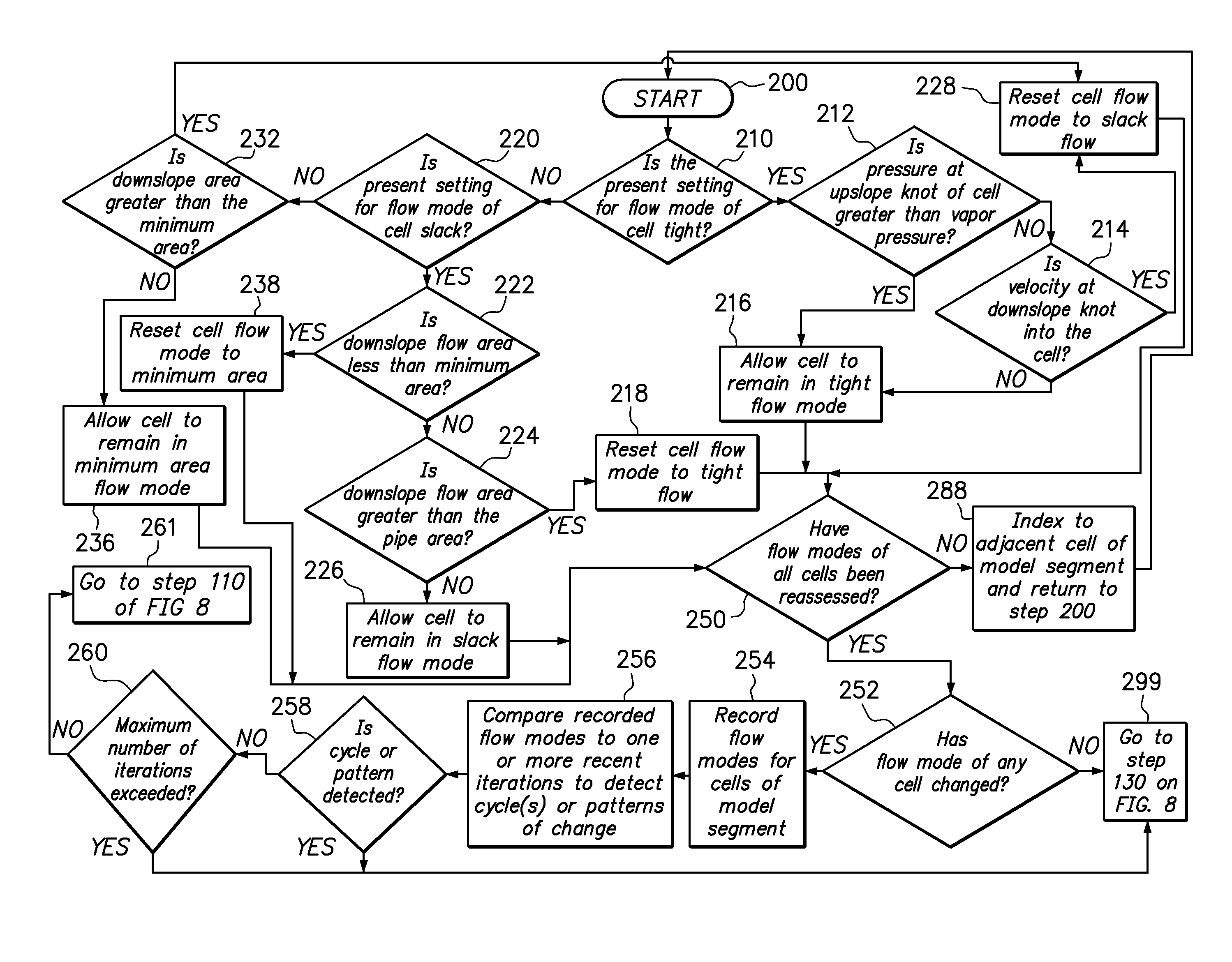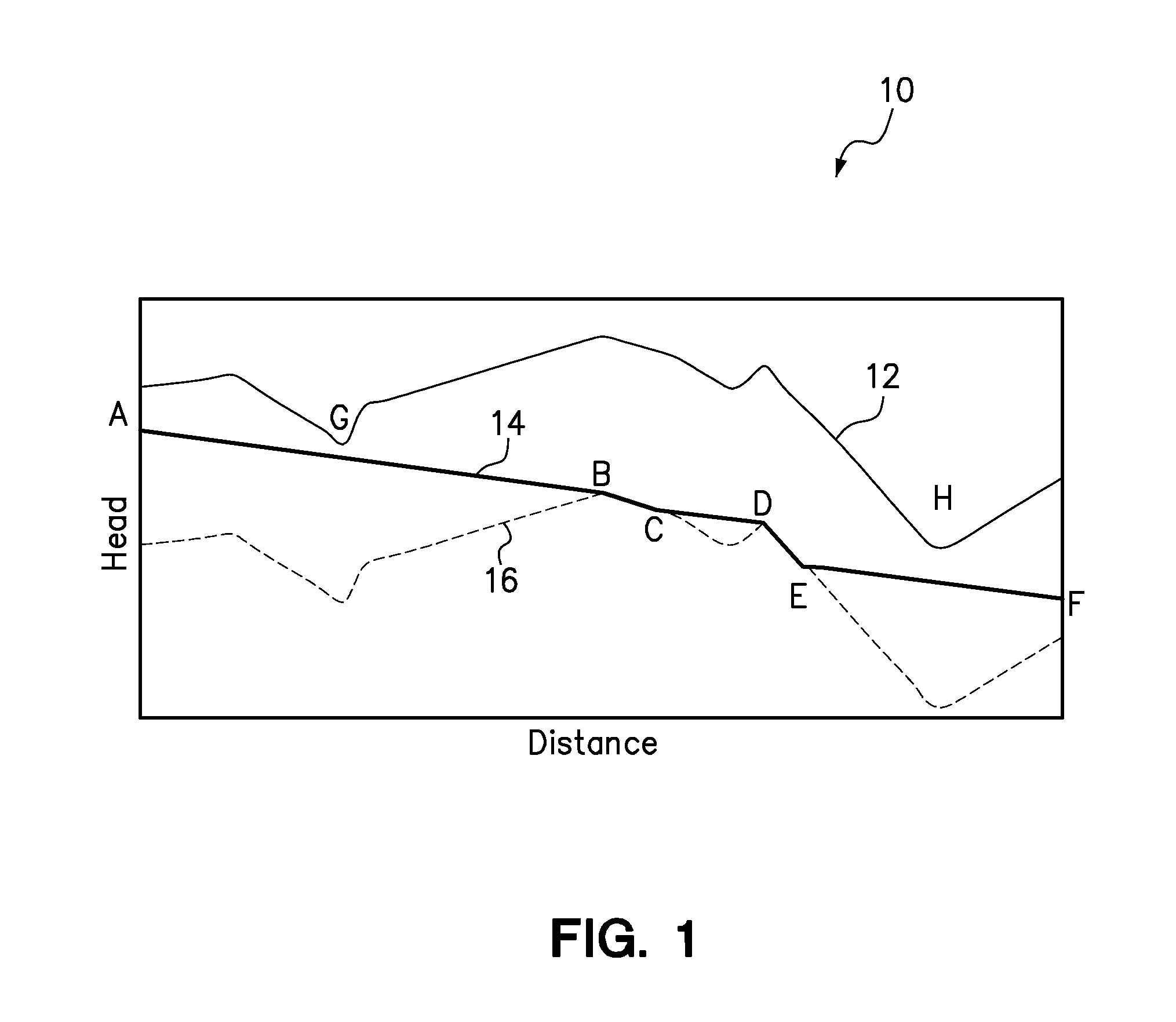Pipeline flow modeling method
a pipeline flow and flow modeling technology, applied in the field of mathematical modeling of pipelines, can solve the problems friction head loss, general increase of friction head loss, etc., and achieve the effect of facilitating a sequence of computations and accurate modeling
- Summary
- Abstract
- Description
- Claims
- Application Information
AI Technical Summary
Benefits of technology
Problems solved by technology
Method used
Image
Examples
Embodiment Construction
[0052]One embodiment of the method of the present invention provides a computer programmable method of modeling the flow, in a model segment of a pipeline, of a product having volatile components that provides stable computational hydraulic modeling of transient pipeline conditions including tight flow conditions; slack flow conditions; transitions between tight and slack flow conditions; shut-in (zero flow) conditions in slack regions; transitions to and from shut-in conditions in slack flow regions; transitions from forwards to backwards (reversed) flow in slack regions; transitions from backwards flow to forwards flow in slack regions; and drain down on both sides of a peak elevation traversed by the model segment. Embodiments of the method overcome the shortcomings of conventional models that fail to accurately model flow involving these and other transient conditions.
[0053]Embodiments of the method use three fixed state equations, relating the conservation of momentum, conserva...
PUM
 Login to View More
Login to View More Abstract
Description
Claims
Application Information
 Login to View More
Login to View More - R&D
- Intellectual Property
- Life Sciences
- Materials
- Tech Scout
- Unparalleled Data Quality
- Higher Quality Content
- 60% Fewer Hallucinations
Browse by: Latest US Patents, China's latest patents, Technical Efficacy Thesaurus, Application Domain, Technology Topic, Popular Technical Reports.
© 2025 PatSnap. All rights reserved.Legal|Privacy policy|Modern Slavery Act Transparency Statement|Sitemap|About US| Contact US: help@patsnap.com



